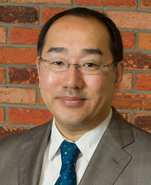




Kamishima Laboratory is looking for research students who are interested in diagnostic imaging from
home and abroad.
Research students will go on to graduate school as soon as possible to carry out their research in
earnest.
To become a research student, you need to have appropriate motivation, language skills, and
scientific thinking skills.
Regarding motives, it is necessary to be able to clearly explain why you want to proceed with your
research at the Kamishima laboratory.
Regarding language proficiency, TOFLE-IBT 80 points or higher and / or TOFLE-PBT 550 points or
higher are required as English language proficiency for smooth research.
It is desirable to have Japanese proficiency (Japanese-Language Proficiency Test Level 1) in order
to spend daily life without problem.
To prove your scientific ability, you need to prove your ability to explain in your own words about
the research you have done or the research you are interested in in writing and in an interview.
I hope that motivated students will cultivate their research capabilities at the Kamishima
Laboratory and make a big leap forward.
There are various factors that have contributed to recent developments in health-care worldwide. In particular, there has been remarkable progress in the field of diagnostic imaging, enabling the precise evaluation of lesions and the specific extent of damage. This imaging technology is making an enormous contribution to patient care by providing choices in the determination of appropriate treatment in on-site, daily medical practice.
Specifically, when compared to the rest of the world, the prevalence of CT and MRI technology in Japan is quite significant. This implies that people throughout Japan are benefitting from the latest medical equipment.
On the other hand, as these medical devices have advanced, they have also become more diversified, complicated, and the amount of information contained in each image has become enormous. This makes it challenging for those who interpret diagnostic imaging to extract pertinent findings from the images and communicate this information clearly to doctors in a busy and hectic clinical environment.
Advanced research in diagnostic imaging has progressed in many directions; it is our pursuit to use the image to extract information that is of clinical value, in as an objective and an effective manner as possible.
Let us list some of the projects we are engaged in, in our laboratory. For example, we are currently using multiple modalities to study the quantitative evaluation of inflammatory activity and destructive lesions in rheumatism. We are also aiming to achieve improved image reading in order to diagnose various disorders primarily related to bones and joints.
In an effort to further our research, we are collaborating with doctors from both within and outside the university such as physicians and orthopedic surgeons. In addition, we are working with health scientists: radiology and ultrasound technicians, and wide variety of researchers in the fields of medical physics and engineering to maintain and advance the level of our research.
We are seeking those who are interested in diagnostic imaging, and who are currently enrolled as an undergraduate, graduate, or research student to become a part of our program. A student who completes the health sciences degree will be qualified as Master of Health Sciences, or Doctor of Health Sciences.
Our program goals are:
Our curriculum is aimed to sharpen intellect through daily debate and to develop scholarly papers.
Professors will impart guidance so that students will not only be able to present research findings in an academic conference setting, but also be able to vigorously debate their ideas.
We also place an emphasis on education in English. The textbook we use to instruct how to prepare English research papers is: ‘Science Research Writing: A Guide for Non-Native Speakers of English’ by Hilary Glasman-Deal.
It is our hope that a prominent researcher, who will play a leading role in expanding the field diagnostic imaging, will emerge from this laboratory.
Faculty of Health Sciences, Hokkaido University
Tamotsu
KAMISHIMA, M.D., Ph.D.
MSK radiologist

Tamotsu KAMISHIMA, M.D., Ph.D.
Currently, other language page than another Japanese and English in preparation.
I perform appropriate management, and the privacy policy to have you provide it through this site does not use it other than the purpose concerned.
I use a JavaScript in some contents to have you use it more comfortably in this site. Because it may not be displayed definitely when a JavaScript is not made on (effectively) in browser setting of the use, approve it.